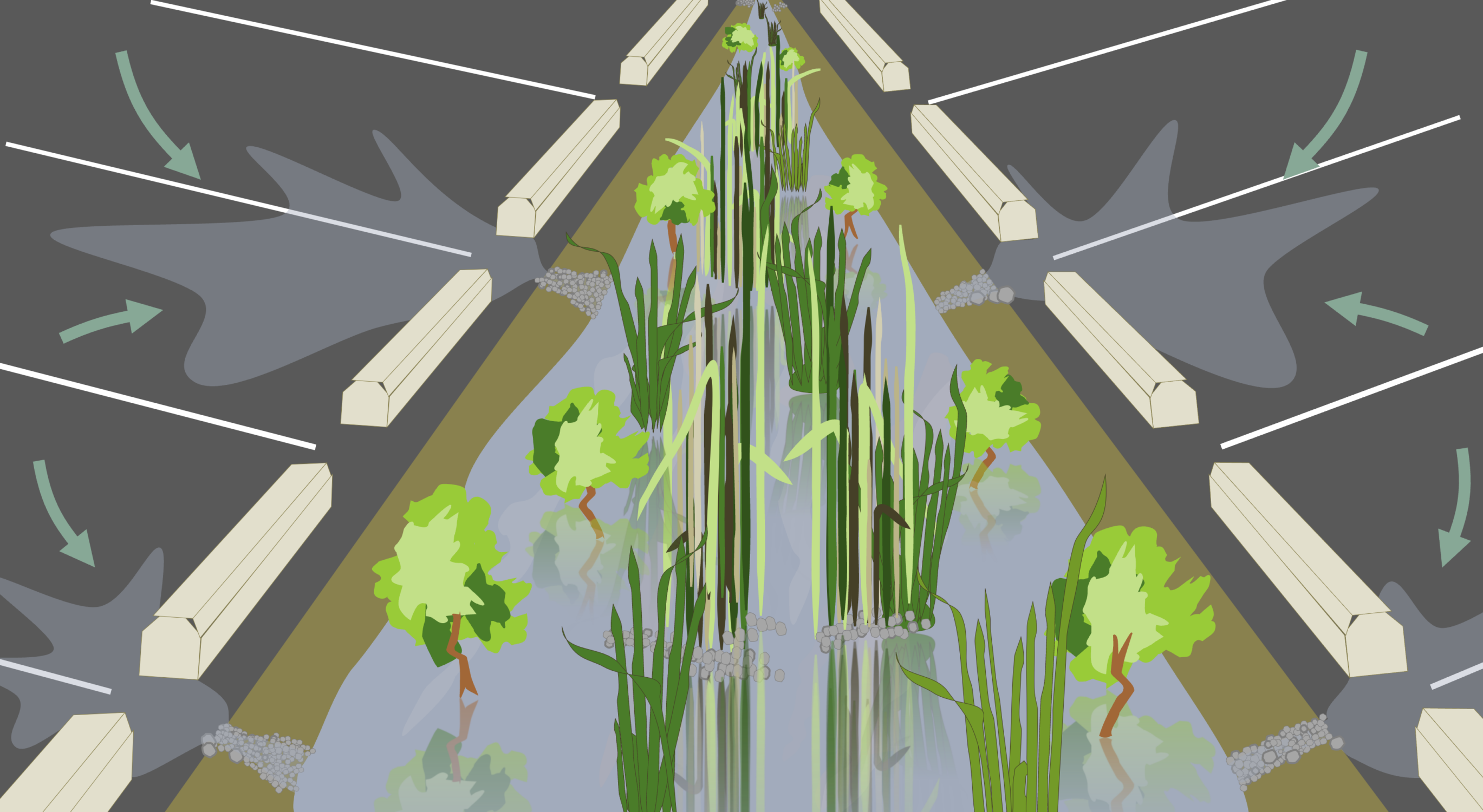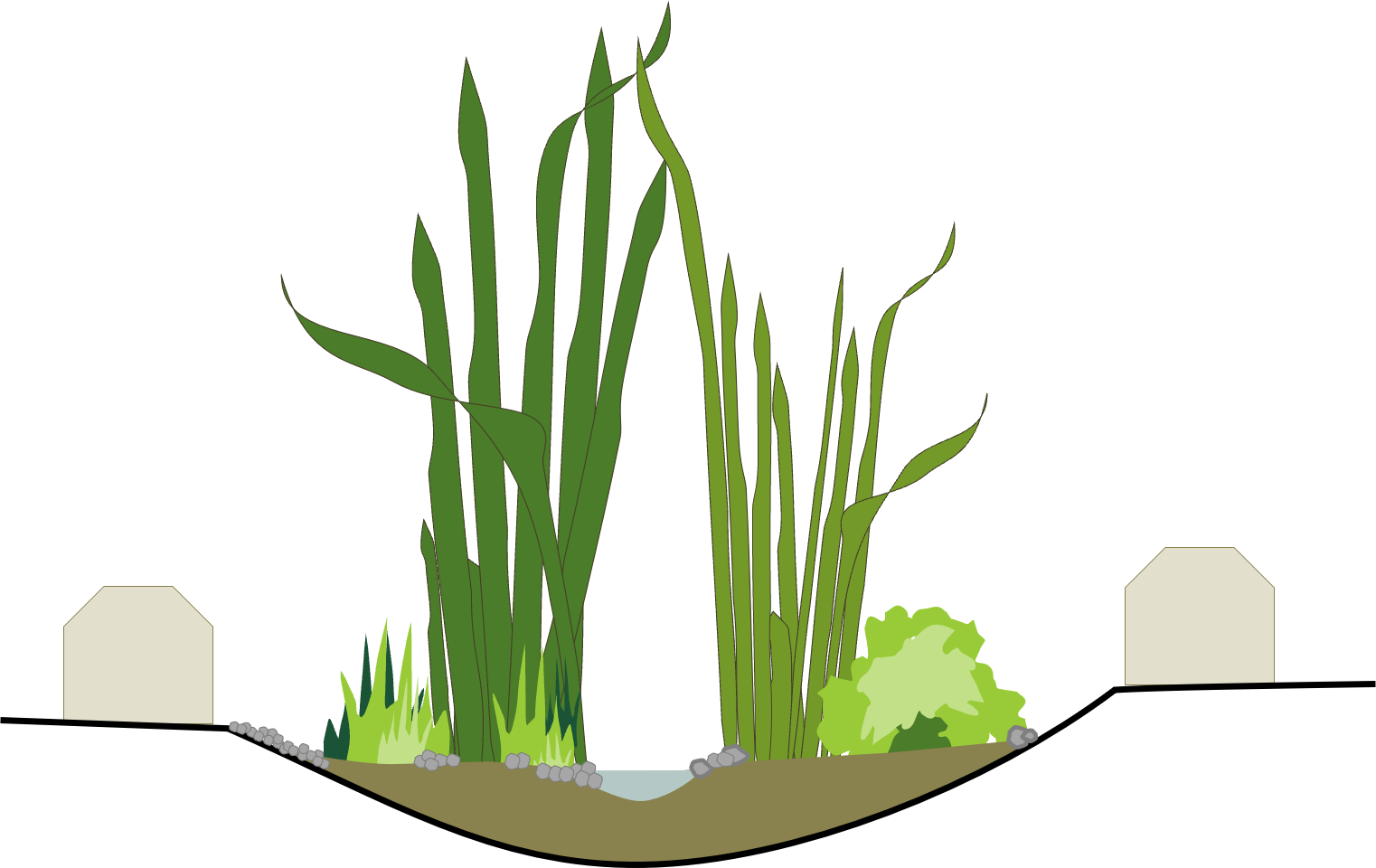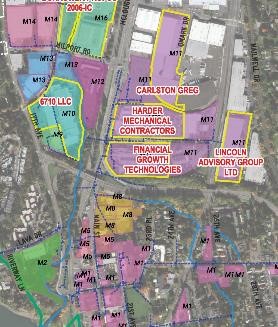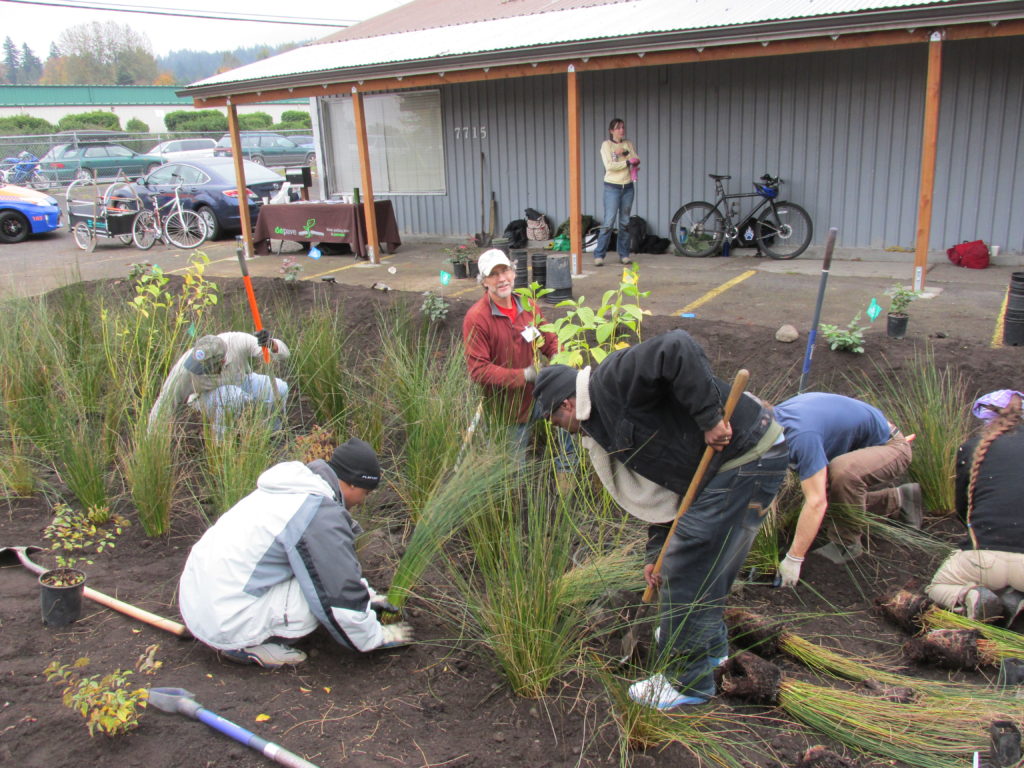Green Infrastructure
Reducing the Impacts of Runoff
Stormwater management is a cost-effective method of managing the effects of wet weather on flooding and water quality within developed areas. Surfaces such as asphalt and concrete are impervious – they do not allow water to soak into the ground.
Stormwater flows across impervious surfaces, picking up pollutants, such as oil and anti-freeze, and carries these toxins into storm drains that feed directly into local streams like Johnson Creek. More importantly, scientists are discovering that the pollution coming from parking lots, roads, and highways can be highly toxic to Coho and other salmonids.
Reducing the amount of impervious surfaces is a great way to reduce the impacts of stormwater runoff. Adding green infrastructure can improve Johnson Creek’s water quality, reduce toxic runoff, and alleviate flooding.
The Johnson Creek Watershed Council is partnering with local businesses, churches, and schools to promote sustainable practices in our community. We can help design and build green infrastructure projects that will reduce local flooding and improve the water quality entering our local streams. By working together, we hope to engage communities in environmental conservation by protecting public health within the watershed.




